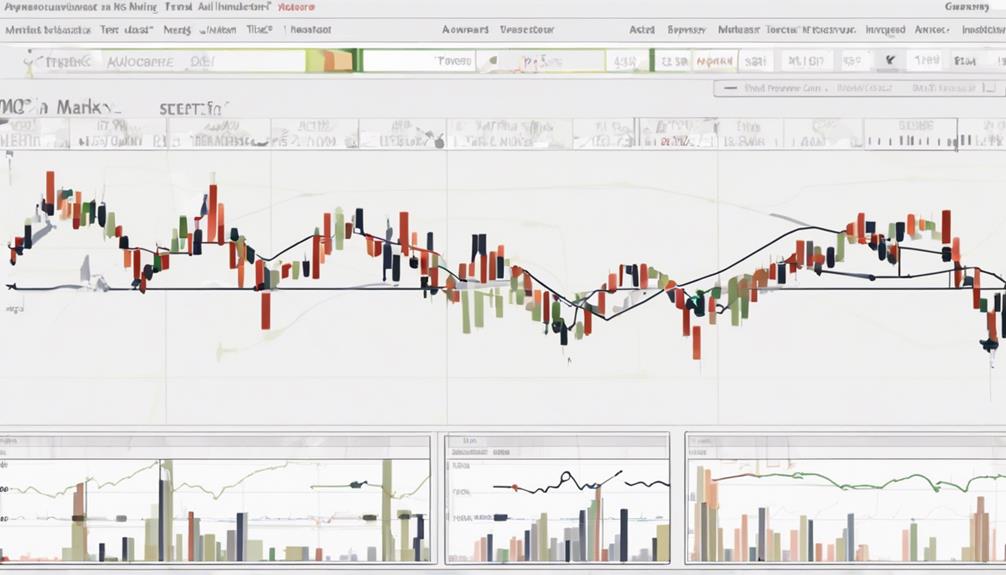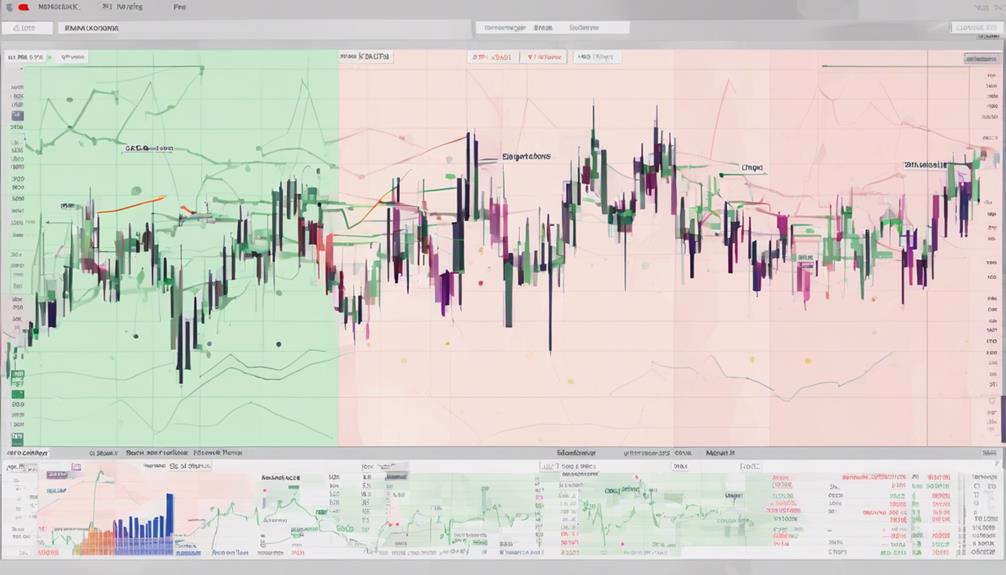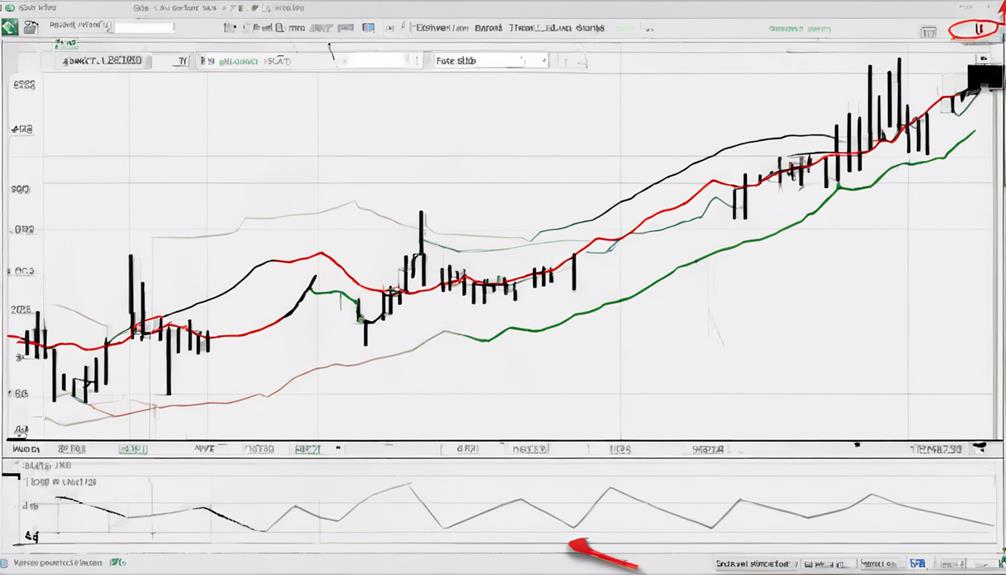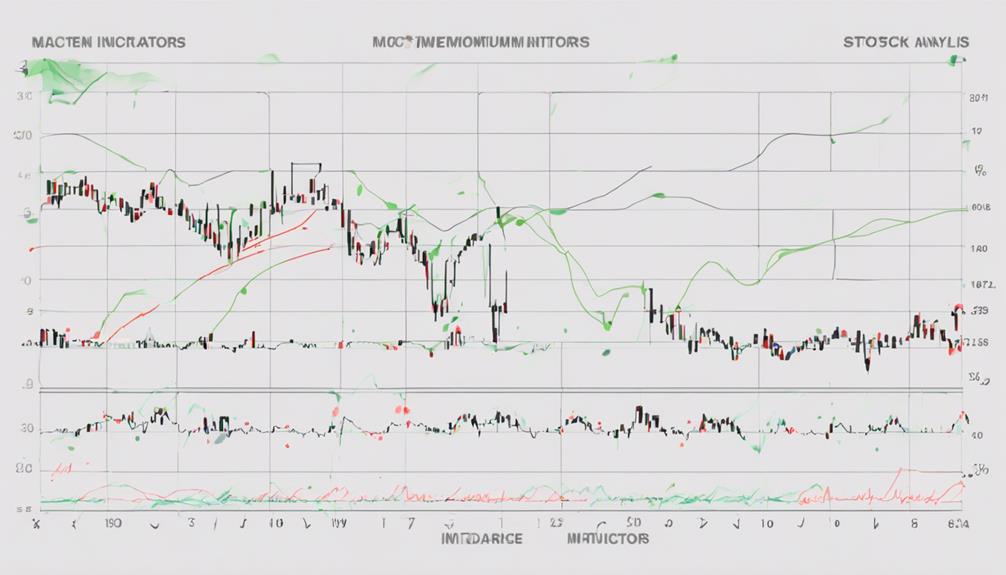When considering stock market technical indicators, you might want to pay attention to these five essential tips that can enhance your trading strategies.
Discover how these indicators can offer valuable insights and assist you in making informed decisions in the dynamic world of stock trading.
By incorporating these tips into your trading toolkit, you can potentially unlock new opportunities and improve your overall trading performance.
Understanding Stock Market Technical Indicators
To comprehend stock market technical indicators effectively, analyze the mathematical calculations derived from historical price, volume, or open interest data. Technical indicators are crucial tools for traders, providing signals on stock price movements.
Moving averages, a common indicator, smooth out price data to identify trends. Momentum indicators, on the other hand, help traders gauge the strength of a price movement.
Support and Resistance levels are key areas where stock prices often reverse, guiding traders on potential entry and exit points. By conducting thorough analysis of these indicators, traders can make informed decisions, manage risks, and enhance their overall performance in the stock market.
Mastering these indicators is essential for successful trading strategies and maximizing profits.
Importance of Trend Indicators

Trend indicators, such as moving averages, play a pivotal role in identifying and understanding the direction of a stock's price movement over a specific period. Moving averages are among the best technical indicators used in the market for trading. They can indicate potential trend changes when shorter-term averages cross above or below longer-term averages.
Traders often utilize exponential moving averages (EMAs) as they give more weight to recent prices, making them responsive to current trends. Understanding the prevailing market direction through trend indicators is crucial for making informed trading decisions.
Utilizing Mean Reversion Indicators

Moving on from understanding trend indicators like moving averages, traders can enhance their analysis by utilizing mean reversion indicators such as Bollinger Bands to identify potential price reversals based on deviations from the mean.
Bollinger Bands consist of a middle band (SMA) and upper/lower bands calculated using standard deviations, indicating overbought or oversold conditions in the market. When prices touch the upper band, it may suggest a potential reversal to the downside, while touching the lower band could indicate a bounce back up.
These indicators help traders pinpoint price levels that are likely to revert to average levels, making them valuable tools for profiting from price movements returning to mean values.
Leveraging Relative Strength Indicators

Leveraging Relative Strength Indicators provides traders with a quantitative method to assess price momentum and potential market conditions. The Relative Strength Index (RSI) is crucial for determining the strength of a trend and identifying entry and exit points.
RSI values above 70 indicate overbought levels, signaling a possible price reversal, while values below 30 suggest oversold conditions, presenting a potential buying opportunity. By using RSI, traders can confirm trends and anticipate trend reversals in the stock market.
Understanding these signals can help traders make informed decisions and maximize their profits. Make sure to incorporate RSI analysis into your trading strategy to enhance your ability to recognize market trends and capitalize on opportunities.
Maximizing Momentum Indicators

To optimize the effectiveness of momentum indicators in your trading strategy, consider combining different indicators like MACD, RSI, and Stochastic Oscillator to gain a comprehensive view of market conditions and potential price movements.
Utilize RSI to identify overbought and oversold conditions, Stochastic Oscillator for predicting market shifts, and MACD with price action analysis to confirm trends.
Look for divergence between price and momentum indicators to spot potential trend reversals or continuation patterns. Assess the strength of market trends using momentum indicators to make informed trading decisions based on changing momentum signals.
What Are the Essential Technical Indicators for Stock Market Analysis?
When diving into stock market analysis, understanding the best technical indicators finance explained is crucial. Indicators such as moving averages, RSI, MACD and Bollinger Bands can provide valuable insight into price trends, momentum, and volatility. Utilizing these indicators can aid in making informed trading decisions.
Frequently Asked Questions
What Are the Top 5 Technical Analysis Indicators?
To identify top technical analysis indicators, consider Moving Average Convergence Divergence (MACD), Relative Strength Index (RSI), On-Balance Volume (OBV), Stochastic Oscillator, and Bollinger Bands. These tools help gauge market trends, momentum, and potential reversals effectively.
What Is the Most Accurate Technical Indicator for Stocks?
The Relative Strength Index (RSI) stands out as the most accurate technical indicator for stocks. It gauges price movements to pinpoint overbought or oversold conditions, aiding traders in confirming trends, spotting reversals, and making informed trading choices.
What Is the Best Combination of Technical Indicators?
For the best combination of technical indicators, consider your strategy, timeframe, and risk tolerance. Try moving averages with MACD or RSI for trend confirmation. Experiment with oscillators like Stochastic Oscillator and trend indicators like Bollinger Bands.
What Are the Five Important Steps of Trading?
To trade successfully, you must understand market trends, analyze price movements, identify key support/resistance levels, manage risk effectively, and use technical indicators wisely. These steps are crucial for making informed trading decisions and maximizing profits.
Conclusion
In conclusion, mastering stock market technical indicators is crucial for successful trading. By combining moving averages, Bollinger Bands, Stochastics, MACD, volume, and support/resistance levels, you can gain a comprehensive understanding of market trends and make informed decisions.
Remember, Rome wasn't built in a day, so take your time to analyze the data and trust the indicators to guide your trading strategy effectively.
Happy trading!


